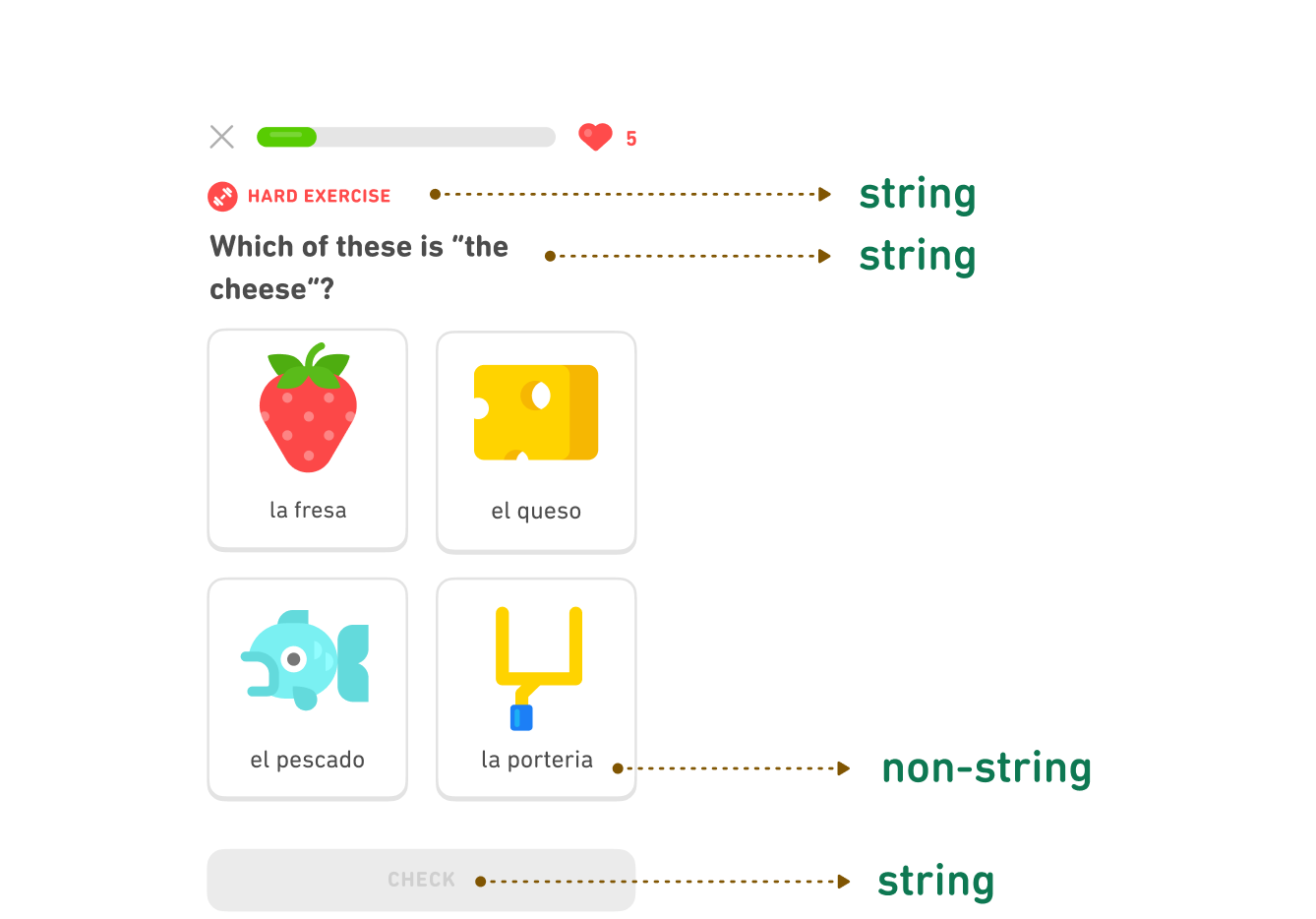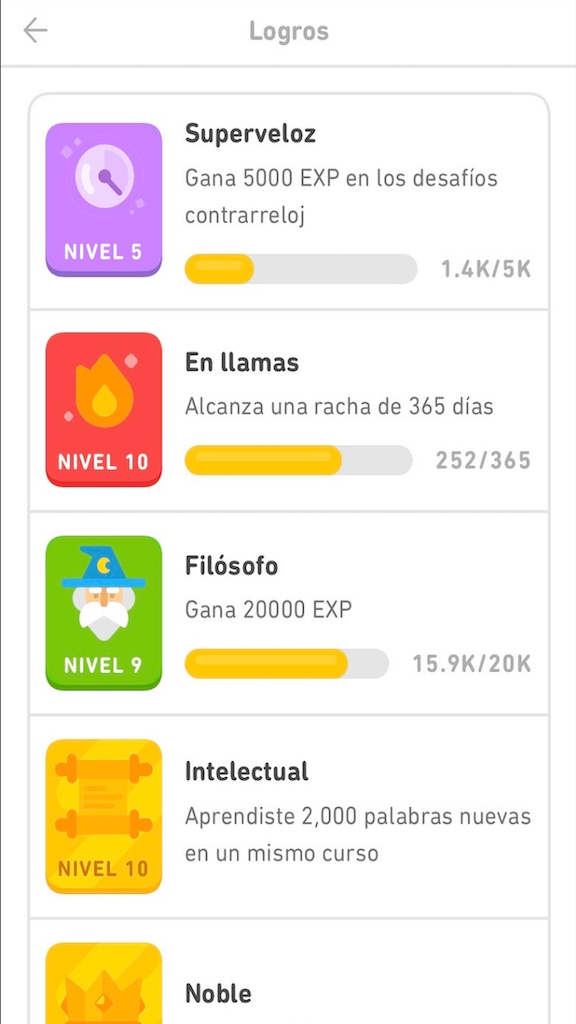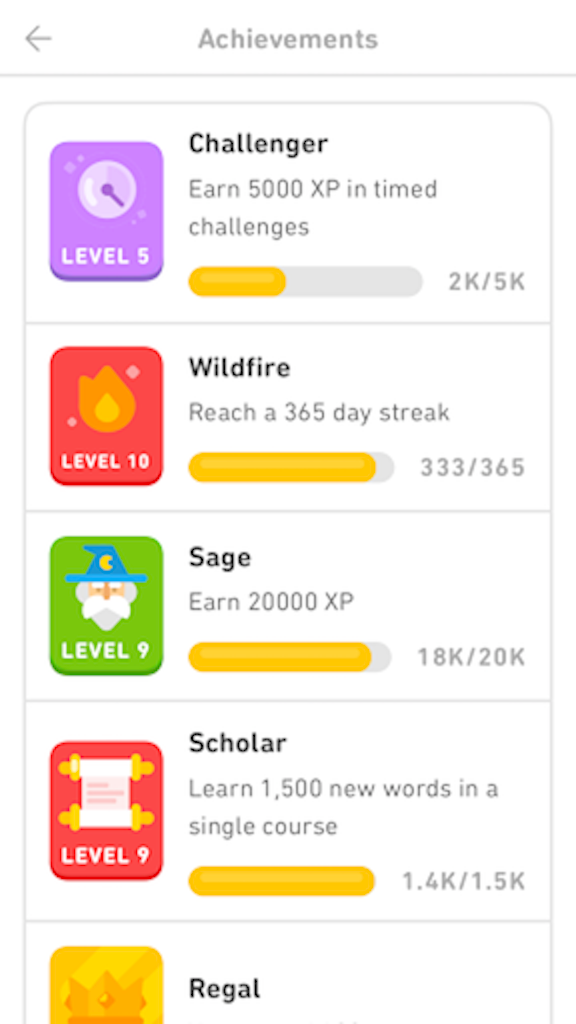Duolingo teaches languages to over 500 million learners around the world, and we work hard to make the learning experience delightful and inclusive for every one of them. Our localization and translation processes are crucial to reaching the goal of making every screen, notification, and mid-lesson owl encouragement clear and a little quirky.
We're committed to making all our messaging as inclusive as possible, and this can present very particular linguistic puzzles, especially for languages like Spanish that have lots of words and endings that reflect gender. In this post, we discuss some of the strategies and workarounds that Duolingo's Spanish localization team uses to strive toward language inclusivity.
What is localization?
Our localization team creates and optimizes content for learners who interact with Duolingo in a language other than English. Beyond translating and making sure our work matches the intended meaning, we also want our content to feel locally relevant, no matter where a learner lives. Our localization team focuses on the “strings,” or wording, that learners interact with everywhere except the exercises themselves (course content).

The challenge with Spanish
Spanish, like many languages, has two grammatical genders — masculine and feminine — and like other Romance languages, almost every object, adjective, and noun is one or the other. This makes it difficult to avoid the use of genders in Spanish.
Our Duolingo writing guide calls for the use of non-gendered language whenever possible. Specifically, we use “they/them” pronouns when referring to our users. However, the use of “they/them” pronouns is challenging in Spanish since all pronouns are either masculine or feminine.
It's often easy to be inclusive and avoid misgendering our learners when we address them directly. To translate “What language do you speak?” to Spanish (¿Qué idioma hablas?), we use the verb hablas “you speak,” which is the same for everyone, of all genders. But this is not always possible, and for those cases, we have the opportunity to find creative workarounds.
One clever solution we use is rephrasing instead of always using direct translations. For instance, a word we use a lot at Duolingo is “welcome,” which has masculine and feminine forms in Spanish (bienvenido and bienvenida). The masculine form has traditionally been the default, but we don’t know the gender of our learners and we prefer to be more inclusive whenever possible. Our solution is to use te damos la bienvenida or “we welcome you”: by addressing the learner directly, with te “you,” we simply avoid the gendered term.
But of course, language isn't the only factor we need to consider, and we also think about constraints around spacing, design, and context. Sometimes our creative solution doesn't fit the screen, so if te damos la bienvenida is too long, we might use a shorter, neutral alternative like hola or “hello.” This translation diverges from the English original, but still achieves the goal of greeting our learner and keeping a casual, warm tone while remaining gender neutral.
Another workaround? Finding alternative words that are neutral or ambiguous with respect to gender, or what localization experts call “epicenes.” While many Spanish nouns have different versions for men and women, some aren't marked for gender and can be used for all genders. For example, enfermero is for a nurse who is a man (it ends with -o) and enfermera is for a nurse who is a woman (it ends with -a), but estudiante "student," persona "person," and especialista “specialist” don't do the -o/-a change for gender. If you speak Spanish, you probably use epicenes all the time without knowing!

Achieving inclusivity
Achievements are badges that Duolingo learners unlock as they advance in their learning journey. The Achievements themselves are usually labeled with adjectives or nouns that refer to a learner — for instance, a learner is a “Sage” when they achieve 20,000 XP, a “Wildfire” when they achieve a 365 day streak, and a “Sharpshooter” when they complete 100 lessons without mistakes.
Direct Spanish translations of these Achievements are usually gendered nouns or adjectives. Here's another opportunity for creative translation with epicenes!
One example is the “Legendary” Achievement, achieved when a learner wins first place in their leaderboard in the Diamond League. The direct translation in Spanish is Legendario (a masculine word that has a feminine form with an -a), so instead, we use Leyenda ("legend"), which is a noun that can be used to describe someone regardless of their gender.
“Friendly,” “Weekend Warrior,” and “Scholar” all use translations that follow the same approach.

|

|
However, you can’t always win them all! Those non-language constraints, like about design and spacing, means we have left in some gendered translations, like the masculine forms Filósofo for “Philosopher,” Fotogénico for “Photogenic,” and Vencedor for “Conqueror.”
Inclusivity is the future
On Duolingo's localization team, we're constantly trying to find ways to meet learners wherever they are, in a voice they can connect with, whether they're used to a game-like mobile experience or this is their first time downloading an app. By finding creative ways to build gender neutrality into our standard approach, Duolingo's voice in Spanish can be more inviting — for everyone!
